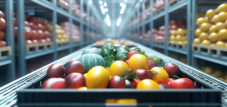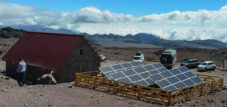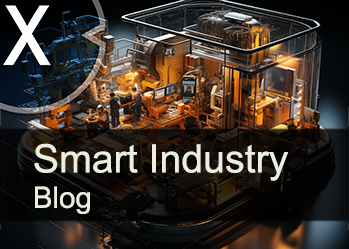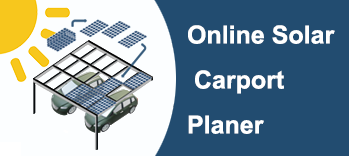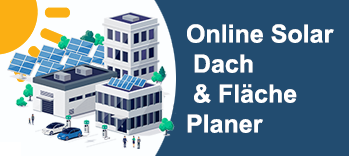EU-Mercosur Agreement: Latin America as the EU's mineral wealth? Lithium, copper, and other resources – Gold Rush 2.0?
Xpert pre-release
Language selection 📢
Published on: October 3, 2025 / Updated on: October 3, 2025 – Author: Konrad Wolfenstein

EU-Mercosur Agreement: Latin America as the EU's mineral wealth? Lithium, Copper & Co. – Gold Rush 2.0? – Image: Xpert.Digital
Not just China: How Europe is now catching up in the battle for Latin America's most important raw materials
More than just raw materials? Why the EU-Mercosur agreement is so crucial now
The European Union is turning its attention to Latin America with renewed strategic emphasis. Driven by the energy transition, the growing demand for critical raw materials, and the urgent goal of making supply chains more resilient, the continent is emerging as a key partner. At the heart of this reorientation is access to natural resources such as lithium, copper, nickel, and rare earths, leading to the pointed formulation that Latin America could become the "EU's mineral treasure trove."
But it's about much more than just mining. The partnership also encompasses agricultural products, the production of green hydrogen, and technological collaborations that go far beyond mere extraction. At the same time, this focus raises critical questions and raises historical concerns: How can one-sided exploitation be prevented? How can local value creation, environmental protection, and social justice be ensured so that Latin America doesn't simply serve as a supplier of raw materials while Europe reaps the profits?
Political instruments such as the EU-Mercosur Agreement are intended to create the legal framework, while German companies are already weighing concrete investment opportunities and risks in a region consisting of 20 highly diverse countries. The following article comprehensively examines the opportunities, challenges, and pitfalls of this burgeoning partnership and answers key questions about how cooperation on equal terms can succeed.
Suitable for:
What is meant by the statement that Latin America should become the “natural resources of the EU”?
The wording suggests that the European Union intends to align its strategic raw materials and energy policy toward Latin America in order to source mineral resources, agricultural goods, and possibly also processed intermediate products there on a significant scale. Several developments are behind this: the accelerated energy transition in Europe, the diversification of supply chains following the crises of recent years, geopolitical tensions, and the realization that critical raw materials (e.g., lithium, nickel, manganese, copper, rare earths, bauxite/aluminum, graphite) as well as sustainable biomass and biofuels are needed in sufficient quantities and of reliable quality. The talk of a "mineral treasure trove" is exaggerated, but points to real interests: the positioning of European companies along the raw materials value chain, the expansion of long-term supply and investment relationships, and the stronger integration of Latin American countries into European industrial and climate strategies. The term is ambivalent because it implies opportunities for growth, employment and technology transfer, but at the same time raises questions about sovereignty, ecological standards, social justice and local value creation.
What role does the EU-Mercosur agreement play in this context?
The EU-Mercosur Agreement is seen as a lever for reducing trade barriers, reducing tariffs, improving investment protection and legal clarity, and institutionalizing technical standards and sustainability-related rules. For the EU, the four Mercosur countries (Brazil, Argentina, Uruguay, and Paraguay), in particular, would be more closely integrated as major agricultural and raw material suppliers and as industrial and energy centers. For the Mercosur side, this would open up better market access to the EU, potentially higher export revenues, more investment, and technology cooperation. Politically, the agreement also sends a signal: Europe is seeking an independent, diversified integration of global value chains that is not solely dependent on China or the United States. At the same time, additional instruments such as sustainability chapters, enforcement mechanisms, and due diligence obligations are crucial to ensuring acceptance. The agreement alone guarantees neither a fair raw materials partnership nor ecological standards, but can create a framework for binding cooperation, provided its design is credible.
Why is Latin America presented as an important future trading partner and investment location for Germany at the Latin America Day in Cologne?
The event brings together the perspectives of politics and business, which point to several megatrends. First, the demand for raw materials resulting from decarbonization: battery materials, copper for electrification, renewable energies, hydrogen, and e-fuels. Second, re-regionalization and "friendshoring": secure, diversified supply chains with reliable partners. Third, the demographic and urban dynamics in Central and South America, which are generating growing domestic markets. Fourth, technological upgrading, startup ecosystems, and digital services that enable cooperation beyond raw materials. Fifth, existing economic complementarities: German industrial equipment manufacturers, chemicals, plant engineering, mechanical engineering, and automotive suppliers are meeting demand for high-quality technology for mining, agriculture, energy, logistics, and Industry 4.0. This intersection creates a plausible argument that Latin America is becoming strategically more important – provided the political, regulatory, and infrastructural framework conditions are predictable.
What specific investment opportunities are mentioned?
The spectrum ranges from traditional raw material mining and agriculture to manufacturing and tech industries. In the raw materials sector, the focus is on lithium salt deposits in the Andean countries, copper mines in Chile and Peru, nickel and manganese deposits in several countries, iron ore in Brazil, bauxite/aluminum, and potentially critical minerals. In agriculture, in addition to soy, corn, sugar cane, and beef, higher-value chains are becoming increasingly relevant: proteins, bioethanol, biodiesel, sustainable biomass, and agritech solutions (smart farming, precision agriculture, drones, satellite data). In manufacturing, the focus is on localizing components for the energy and mobility sectors, such as wiring harnesses, electrical components, intermediate products for batteries, and green steel chains. Tech industries include software development, nearshoring services, fintech, logtech, and data-driven platforms. Accompanying investments in infrastructure – ports, railways, roads, energy networks, data cables – and in education/training are key factors for sustainable scaling.
What warning does Martin Toscano give regarding the heterogeneity of the 20 countries?
He points out that Latin America is not a homogeneous entity. Its political systems, economic structures, fiscal frameworks, legal systems, corruption risks, infrastructure levels, energy prices, labor markets, educational standards, union relations, environmental regulations, and societal expectations vary greatly. Mexico is fundamentally different from Brazil, Chile from Argentina, Uruguay from Peru, Colombia from Paraguay, and Central America from the Andean countries. For companies, this means that market entry strategies, compliance setups, partner selection, risk management, and localization decisions must be country-specific. A "one-size-fits-all" model usually fails due to legal and operational realities. Toscano thus emphasizes the need for differentiated, decentralized market development and a long-term presence.
How do opportunities and risks differ in individual subregions?
In Mexico, the USMCA framework, proximity to the US, a broad industrial sector, and strong automotive and electronics manufacturing act as a magnet for nearshoring. Brazil, as the largest market and an agricultural and industrial giant, is a continent in its own right, with a relevant raw material base, a large domestic sector, and regulatory complexity. Chile and Peru boast mining expertise and relatively stable macroeconomic fundamentals, although political cycles can alter the regulatory framework. Argentina combines high resource potential (lithium, Vaca Muerta gas, agriculture) with macroeconomic volatility and capital flow restrictions. Uruguay often offers reliable institutions and rule of law compared to other regions. Colombia has made progress in security and reforms but remains sensitive to political shifts. Central America and the Caribbean are more heterogeneous, with niches in agriculture, tourism, nearshore services, and renewable energy, albeit on a smaller scale. These differences determine how capital should be allocated: diversified, multi-level, and politically and economically prudently secured.
What strategic interests does the EU pursue with regard to raw materials from Latin America?
Securing critical raw materials for the energy transition and industrial transformation is key. These include battery raw materials (lithium, nickel, manganese, cobalt), conductor and contact metals (copper, silver), steel inputs (iron ore), and aluminum chains. This is complemented by access to sustainable agricultural raw materials, biofuels, and, where appropriate, green hydrogen or derivatives (ammonia, methanol), where South American locations have inexpensive renewable resources. At the same time, the EU aims to enshrine standards for environmental and social sustainability, establish deforestation-free supply chains, and implement human rights due diligence obligations along the supply chain. Politically, the aim is to reduce dependence on nationally dominant suppliers and build a more resilient, collaborative raw material base with Latin American democracies and reliable institutions. Technology and knowledge transfer, joint research and development, and training partnerships complement this portfolio.
How can we prevent Latin America from merely supplying raw materials and Europe from skimming off the added value?
The answer lies in vertical integration in the countries of origin and in fair, long-term cooperation models. First, investments should promote local processing capacities, for example, in the preliminary stages of battery production (raw material refining, cathode/anode materials), copper processing, or green steel. Second, joint ventures and offtake agreements can be coupled with technology packages, training programs, and R&D collaborations. Third, transparent taxation and licensing systems are important so that producing countries generate predictable revenues and invest in education, infrastructure, and diversification. Fourth, clear sustainability standards are needed that are not just export requirements but become locally anchored environmental and social standards. Fifth, supply chain financing and development banks should specifically support projects with added value in the country. This creates mutual benefits that increase political stability and social acceptance.
What role does sustainability play in raw material partnerships with Latin America?
Sustainability is a twofold imperative: first, normative; second, economic. Normative, because the preservation of biodiversity, water, land rights, indigenous rights, and labor standards is a prerequisite for legitimate raw material extraction. Economic, because global buyers are increasingly integrating environmental and social criteria into purchasing conditions, pricing carbon footprints, and demanding deforestation-free supply chains. Projects that credibly demonstrate their ESG performance receive more favorable financing, better access to premium markets, and lower regulatory risks. Concrete levers include environmental impact assessments, independent audits, participatory consultation processes, water and waste management, post-mining restoration, the circular economy (recycling of metals and batteries), and digital traceability. Sustainability is thus not an add-on, but a core part of the business model.
Why do German companies emphasize the importance of legal certainty and reliable institutions?
Investment decisions with long payback periods – mining, chemicals, infrastructure, energy – require predictability. Without due process, reliable permits, enforceable contracts, intellectual property protection, transparent tenders, functioning courts, and predictable tax regimes, risk increases. The result is higher capital costs or the lack of investment. The rule of law is particularly important for medium-sized enterprises (SMEs) that lack large risk buffers. From a company perspective, strengthening institutions, anti-corruption mechanisms, and administrative capacities in partner countries is just as important as tariff reductions or market size. Legal cooperation programs, arbitration, capacity building in public authorities, and digital administrative processes can make a substantial contribution here.
Suitable for:
- Strategic realignment of the supply chains and logistics: A requirement of the hour - at short notice, in the medium term and long -term
What specific opportunities does Mexico offer for German investors and exporters?
Mexico benefits from its proximity to the US, USMCA regulations, and a robust manufacturing sector. Opportunities for German companies arise in automotive and supply chains, e-mobility, power electronics, mechanical engineering, logistics, chemicals (including specialty chemicals), packaging, medical technology, and IT services. Nearshoring trends are shifting parts of Asian supply chains to North America. This favors the localization of component manufacturing, back-office services, and engineering. At the same time, Mexico requires attention to regional differences (North/South), energy prices and availability, safety issues, local content requirements, labor law, and unions (labor law reform). Martin Toscano's dual role as Evonik manager and president of the German-Mexican Chamber of Commerce and Industry points out that German chemical and industrial goods suppliers see Mexico not only sales opportunities, but also production and R&D prospects – along with the need to rigorously implement compliance and sustainability.
How do Brazil, Chile and Peru position themselves in the raw materials context?
Brazil is a global player in iron ore, agricultural products, and increasingly in renewable energies and green chemicals. Brazilian industrial clusters also offer markets for mechanical engineering, automation, process control technology, chemicals, and factory digitalization. Chile is a leader in copper and a significant player in lithium; stable macroeconomic policies and institutional quality have attracted foreign investors, even as political reform discourses are impacting the regulatory environment. Peru is strong in the copper and zinc segments, with a growing infrastructure and energy agenda. Both Andean countries focus on mining efficiency, water and environmental management, and social acceptance. Opportunities for German suppliers exist in mining automation, sensor technology, chemicals for ore processing, water treatment, energy integration (hybrid and renewable systems), safety technology, and training.
What particular challenges characterize Argentina as an investment location?
Argentina boasts significant resources: lithium in the so-called Lithium Triangle, rich agricultural lands, gas in Vaca Muerta, and a well-educated population. However, macroeconomic instability, capital controls, exchange rate regimes, inflationary dynamics, and recurring debt problems make planning difficult. Companies therefore calculate with additional financing and hedging costs. Successful investments often rely on gradual scaling, local partnerships, export orientation to generate hard currency, flexible hedging strategies, and scenario planning. If more stable framework conditions can be established, lithium-related value creation, agricultural processing, and energy technology could grow significantly.
How do due diligence obligations and EU regulation change the options for cooperation?
With human rights and environmental due diligence, deforestation-free supply chains, and climate reporting, the demands for transparency and governance are increasing. For European buyers, it is no longer sufficient to simply guarantee quality and price; they must provide evidence of origin, production methods, and impact. This is transforming relationships with suppliers in Latin America: from one-time purchase agreements to long-term partnerships with shared data standards, audits, training, and joint improvement plans. Those who offer this professionalism—for example, through digital traceability, satellite monitoring, blockchain-based supply chains, or independent certifications—can gain a competitive advantage. For SMEs, this requires alliances with service providers, industry initiatives, and development organizations to share costs.
Is the focus on raw materials compatible with Europe's industrial policy?
Yes, provided raw materials are understood as part of integrated value chains, not as mere extraction. Europe's industrial policy aims to reduce strategic dependencies while expanding high-tech and sustainable production. This requires stable raw material flows, preferably from partner regions that share common values and meet standards. At the same time, Europe should invest in recycling, substitution, material efficiency, and the circular economy. This reduces the demand for primary raw materials and increases resilience. In this model, Latin America can become both a supplier and a production location for intermediate products – with two-way technology transfer and industrial development in the countries of origin.
What role do energy partnerships play, especially green hydrogen and e-fuels?
South America offers excellent conditions for renewable energies: wind in Patagonia, solar in the Atacama, hydropower in Brazil and the Andes. This creates potential for green hydrogen and derived e-fuels. For Europe, especially Germany, such imports are important as molecules that are difficult to substitute in industry, aviation, chemicals, and shipping. However, projects are capital-intensive and require clear purchase agreements, CO₂ pricing, certification systems, and infrastructure (pipelines, ammonia terminals, storage facilities). Local value creation—such as fertilizer production from green ammonia or synthetic chemistry—could create additional viability. Competition for capital and locations is global; reliable political guidelines and financing mixes from private capital, export credit agencies, and IFIs are crucial.
What is the importance of the agricultural sector and food systems in the EU-Latin America axis?
Latin America is a global agricultural hub, and the EU is a demanding sales market with high standards. Collaborations address productivity (precision agriculture), quality (traceability, hygiene), sustainability (deforestation-free, biodiversity conservation), resilience (climate adaptation), and processing (proteins, biochemicals). Conflicts arise between market liberalization and the protection of sensitive EU sectors, deforestation and land use, pesticide standards, and animal welfare. Solutions lie in clear rules, measurable targets, monitoring, and incentive systems that reward producers who operate more sustainably. Technology providers from Germany – sensors, drones, data platforms, farm management software, seed technologies, storage and cold chains – can support efficiency gains and standard compliance.
How can social conflicts surrounding mining projects be avoided?
Experience shows that projects fail when social licensing is lacking. What is needed is early, inclusive consultation, especially with indigenous and local communities; transparent participation models; fair compensation; local employment and training; respect for cultural practices; and credible environmental management plans. Independent ombudsman services, regular reports, joint monitoring bodies, and benefit-sharing mechanisms build trust. Companies should pursue conservative water and land-use concepts to minimize competition with agriculture. In cases of conflict, mediation processes and a willingness to adapt projects rather than imposing them at all costs are helpful. In the long term, linking extractive projects with regional development plans (infrastructure, education, health) has a stabilizing effect.
What does the finding that conditions in 20 countries vary greatly mean for risk and portfolio management?
Investors should build diversified portfolios that consider macroeconomic, political, and regulatory correlations. Hedging against currency and commodity price risks, scenario planning for different political cycles, insurance against expropriation or political violence (e.g., MIGA), flexible supply contracts, and modular investment phases reduce concentration risks. Due diligence depth varies by country and sector; local partners, German Chambers of Commerce (AHKs), development banks, and specialized consultancies create an information advantage. Governance clauses and exit options in joint ventures, milestone financing, and tiered local content commitments allow for adjustments. A robust compliance system—anti-corruption, antitrust law, sanctions—and digital tools for supply chain monitoring are crucial.
What is the significance of German AHKs and local institutions?
German-foreign Chambers of Commerce (AHKs) act as bridge builders: They provide market information, contacts, legal and tax information, assist in partner and personnel searches, offer dual training modules, support certifications, and act as a neutral platform for dialogue between companies and authorities. In addition, development institutions, export credit agencies, and bilateral programs act as co-financiers and risk sharers. Universities and research institutions facilitate exchange through scholarships, joint laboratories, and transfer centers. This infrastructure also enables small and medium-sized enterprises to manage complexity and implement sustainable standards on an equal footing.
How important is the localization of production in Latin America?
Localization serves several purposes: cost advantages through proximity to resources and markets, resilience through shortened supply chains, regulatory compliance through meeting local content requirements, and political acceptance through local employment. For industries such as automotive, electrical appliances, chemicals, and agricultural technology, localization is often a prerequisite for market access. At the same time, supplier networks, quality standards, logistics, and energy supplies must be reliable. A sensible approach is phased localization: starting with assembly and service, then local procurement, and finally pre-production and R&D. Tax incentives, industrial parks, free trade zones, and training partnerships accelerate scaling.
Which cross-cutting technologies are crucial for investments in mining, agriculture and manufacturing?
Digital technologies such as IoT sensors, edge computing, 5G campus networks, drones, and satellite images increase efficiency and transparency. AI-supported quality control, predictive maintenance, and process optimization reduce costs. In the chemical industry, specialty additives, flotation reagents, solvents, and catalysts are levers for increasing yields. Water technologies—filtration, desalination, and closed-loop recycling—are crucial in arid regions. Energy integration with hybrid power plants combining PV, wind, storage, and possibly gas stabilizes mining and industrial processes. Traceability and compliance benefit from blockchain solutions and forgery-proof certificates. Security technology, occupational health and safety, and environmental monitoring complete the package. Suppliers who combine technology bundles with service and financing increase the probability of success.
Our global industry and economic expertise in business development, sales and marketing

Our global industry and business expertise in business development, sales and marketing - Image: Xpert.Digital
Industry focus: B2B, digitalization (from AI to XR), mechanical engineering, logistics, renewable energies and industry
More about it here:
A topic hub with insights and expertise:
- Knowledge platform on the global and regional economy, innovation and industry-specific trends
- Collection of analyses, impulses and background information from our focus areas
- A place for expertise and information on current developments in business and technology
- Topic hub for companies that want to learn about markets, digitalization and industry innovations
Fair Trade in Commodities: A Strategic Roadmap for Europe
How should the balance of power between the EU, the USA and China be assessed in Latin America?
China has invested heavily in raw materials, infrastructure, and credit lines over the past two decades, with strong positions in mining, energy, and transportation. The United States remains the central political, economic, and security player in the Western Hemisphere, particularly in Mexico, Central America, and the Caribbean. The EU possesses significant soft power, high-quality investments, technological leadership, and strict standards, but has at times been less present in large-scale infrastructure financing. A more strategic EU presence, supported by trade agreements, global gateway projects, and raw materials partnerships, can shift the balance. Competition is real, but many countries pursue multi-partner strategies to avoid dependence and improve conditions. European players score points by offering reliable long-term commitments, transparent systems, and sustainable added value.
Suitable for:
Which governance models work for fair raw material partnerships?
Success factors include clear concession and licensing processes; transparent revenue distribution (e.g., EITI standards); robust environmental regulations with measurable KPIs; legally binding and enforceable dispute resolution; mandatory consultations with local communities; and independent monitoring. Performance-based incentives for water efficiency, CO₂ reduction, and biodiversity conservation increase quality. Revenue-sharing models with subnational authorities improve local acceptance when linked to projects in education, health, and infrastructure. Digital transparency portals that disclose payments, environmental measurements, and social projects reduce mistrust. For the EU, coherence is important: trade agreements, development cooperation, export financing, and corporate regulation should pursue the same sustainability goals.
What role do financing and risk sharing play?
Large-scale projects require mixed financing: equity, long-term debt, export credits, ECA coverage, political risk insurance, and, if necessary, blended finance instruments. Development banks and IFIs can make projects bankable through first loss tranches, guarantees, and technical assistance. Offtake agreements with solid buyers reduce price and sales risks. Interest rate and foreign exchange derivatives manage financial risks, while milestone payments and earnouts distribute business risks between partners. ESG performance can reduce financing costs if KPIs are contractually anchored. For SMEs, supply chain financing, forfaiting, and working capital solutions are relevant for bridging longer payment terms.
How can Europe support local industrialization and human capital development?
Collaborations in vocational training (dual systems), university networks, exchange programs, and joint research projects are levers. Industrial parks with training campuses, technology centers, and test fields accelerate skills development. Programs for entrepreneurship support, start-up financing, and incubation create local supplier networks. Local standardization and certification expertise shorten time to market. Health, safety, and environmental (HSE) skills increase professionalism in sensitive sectors. Language and cultural programs improve everyday collaboration. Continuity is crucial: One-off training courses are no substitute for structural qualifications built over years and generations.
What is the importance of logistics for the realization of an EU-Latin America partnership?
Logistics is the link between resources and markets: ports, terminals, rail connections, heavy-duty routes, container capacities, and customs processes determine costs and reliability. Many raw material locations are located in remote regions; road and energy infrastructure must evolve accordingly. Cold chains for agricultural products, hazardous goods logistics for chemicals, specialized transport for mining equipment, and digital freight processing increase complexity. Investments in multimodal corridors, port modernization, and customs harmonization act as multipliers. Collaborations with European shipping companies, logistics providers, and port operators can transfer expertise and scale capacities.
What geopolitical and social risks need to be considered?
Political cycles can rapidly change regulations in mining, taxes, labor law, and environmental requirements. Social movements can delay or stop projects if participation processes are inadequate. Security risks, organized crime, and corruption burden certain regions. Climate risks—droughts, floods, glacier retreat—affect water availability and infrastructure. Currency volatility, terms-of-trade shocks, and global commodity price cycles alter profitability. Investors must therefore establish robust early warning systems, stakeholder management, insurance solutions, and flexible project architectures. Involving local academia, the media, and civil society as dialogue partners reduces surprises.
Are agricultural and commodity investments automatically linked to deforestation and emissions?
Not automatically, but without strict guardrails, there is an increased risk. Deforestation-free supply chains require geographical verification, satellite monitoring, farm-level data, and clear exclusion criteria. Intensification on existing land, regenerative agriculture, agroforestry systems, and precision fertilization can reduce emissions and promote biodiversity. In mining, electric fleets, renewable energy supply, water cycle management, and tailings safety reduce the footprint. Certifications and independent audits increase credibility. Linking payments to measurable environmental performance (e.g., maintaining intact forests) creates incentives. Collaborations with indigenous communities as forest rangers are often more effective than purely government control.
How can the interests of business, politics and society be reconciled?
Through transparent negotiation processes in which objectives, risks, and benefits are disclosed. Policymakers set the framework: protected areas, climate targets, taxes, labor and environmental law, and participation rights. Companies plan within this framework, develop business cases with sustainability components, and explain impacts. Social actors contribute local perspectives and monitor compliance. Mechanisms such as publicly accessible environmental and social reports, community advisory boards, independent audits, arbitration bodies, and legally sound grievance procedures prevent escalation. When benefits—employment, infrastructure, services—are tangible and fairly distributed, acceptance increases.
Which fields beyond raw materials are important for EU-Latin America cooperation?
The digital economy (cloud services, data centers, cybersecurity), healthcare (pharmaceuticals, medtech, production networks), educational technologies, tourism, and creative industries offer growth. Smart cities projects link mobility, energy, water, waste, and security. Financial services and fintech expand inclusion and trade finance. Climate adaptation – dike construction, water management, urban greening – is becoming a market in its own right. Cultural and scientific diplomacy are also soft power instruments that support trust and long-term relationships. This diversification makes relationships more robust because they are not based solely on commodity cycles.
What lessons can be learned from previous commodity booms?
Previous booms sometimes led to Dutch disease, unequally distributed profits, and environmental destruction. Success stories, however, demonstrate that stable institutions, a clear fiscal framework (e.g., commodity funds), investment in human capital, innovation promotion, and economic diversification are key. Revenue transparency, anti-corruption measures, and functioning local government prevent resource wealth from becoming a burden. The lesson for buyer countries is that short-term price advantages do not replace long-term partner qualities: Reliable, sustainable sources are cheaper in the long run than opportunistic purchases from fragile contexts.
What role does Evonik and the chemical industry play in Latin America?
Chemistry is a cross-sector industry: It supplies process chemicals for mining (e.g., flotation reagents), specialty chemicals for water treatment, additives for plastics and coatings, products for agriculture (fertilizers, crop protection, biostimulants), and components for energy and storage technologies. Chemical companies often operate local production and blending facilities, logistics centers, and laboratories to stabilize supply chains. Evonik is one example of companies that play a role in industrial ecosystems in Mexico and other countries. The ability to combine performance chemicals with service and application technology is a competitive advantage that goes beyond mere raw material supplies.
How can technology help solve governance and acceptance problems?
Technology creates measurability and transparency. Satellite monitoring reveals land-use changes; IoT sensors measure water, air, and noise parameters; blockchain documents material flows; AI analyzes anomalies; open dashboards visualize key performance indicators. Digital twins simulate mining and agricultural processes to minimize environmental impacts. e-Signature and e-Procurement make corruption more difficult. Apps for community feedback increase participation. Governance around technology is crucial: Who has access to data? Who validates it? How are findings implemented? Technology does not replace political decision-making, but it can make it more rational and verifiable.
Which criteria should investors prioritize when choosing a location?
In addition to resource resources, other factors include access to energy (cost, stability, degree of decarbonization), water availability, proximity to ports/railways, skilled labor potential, regulatory clarity, tax regime, legal certainty, security situation, social acceptance, local supplier base, and digital infrastructure. Funding programs, free zones, and industrial parks can offer advantages, but should be assessed based on their net value, not just nominal rates. For export chains, tariff harmonization and compliance with EU standards are essential. Companies should at least incorporate a realistic carbon price into their business cases, as customer demands and regulations are increasing.
How can value chains be made resilient?
Resilience is created through multi-sourcing, safety stocks for critical components, strategic reserves, modular designs, substitute materials, standardization, close suppliers, and transparent inventories. Contractual clauses regarding force majeure, flexible quantities, escalation mechanisms, and joint risk reviews increase adaptability. Early warning systems utilize indicators such as weather data, political events, logistics bottlenecks, and market prices. Digitalization enables real-time transparency, but it requires organizational capabilities: cross-functional teams, clear responsibilities, and exercises ("supply chain war games"). Financial resilience—liquidity lines, diversified financing sources—complements operational measures.
What benefits will the EU gain from stronger ties with Latin America?
The EU gains access to critical raw materials and agricultural products, stabilizes supply chains, reduces geopolitical risks, fills gaps in the energy transition, strengthens its influence in global standard-setting processes, and opens up new markets for high-quality technologies for companies. Furthermore, the EU can export its sustainability model and further develop it together with Latin American partners, supporting global climate goals. Science and education partnerships increase innovation capacity. Economically, this creates diversification from dependence on Asia, and politically, it strengthens alliances with democracies.
What risks arise when Latin America is primarily viewed as a “mineral wealth”?
A purely extractive perspective reproduces historical asymmetries, fosters resistance, and provides a ready-made platform for political countermovements. Environmental and social conflicts, reputational damage, unstable regulatory backlash, and project cancellations threaten. Furthermore, the potential for higher value creation remains untapped, which is economically inefficient. In the long term, partnerships are only stable if they increase value creation, capabilities, and prosperity at both ends of the chain. "Mineral treasure trove" should therefore be understood as a starting point for integrated development strategies, not as an end goal.
How can small and medium-sized enterprises (SMEs) benefit from the opening?
SMEs can occupy niches with technology, service, and quality: specialized machinery, measurement and analysis technology, software, components, maintenance, training, and safety products. AHK services, clusters, consortia, and digital platforms assist with market entry. Supply chain programs of major OEMs offer supplier opportunities if certifications are available. Financing solutions such as factoring, guarantees, and export credit insurance mitigate risks. Partnerships with local system integrators and distributors accelerate scaling. Success lies in bringing focus, references, and a clear value proposition—ideally combined with measurable sustainability benefits.
What time horizons are realistic for significant scaling?
Mining and energy projects typically require 5–10 years from exploration to full operation, depending on permitting, financing, and infrastructure. Agricultural upgrades can take 2–5 years to produce results if supply chains and markets are ready. Manufacturing projects vary: assembly in 1–2 years, deeper localization in 3–5 years, and R&D capacity beyond that. Regulatory processes can extend timelines; early stakeholder engagement pays off. A portfolio approach across different sectors and maturity stages spreads the timing risk.
What role do standards, certifications and labels play?
They are entry points to high-value markets: ISO standards, environmental certifications, deforestation-free labels, responsible mining standards, labor and safety certificates, and food certifications. Labels are only as good as their measurement and audit mechanisms. Digitally linking certificates with supply chain data increases credibility. For the EU market, coordination between regulatory requirements and voluntary standards is necessary to avoid duplication of effort. Companies should define roadmaps outlining which certifications are being pursued, in what order, and how they are translated into customer contracts.
Which infrastructure is prioritized for raw material and agricultural projects?
Road and rail connections from mines and agricultural centers to ports, terminal capacities, bulk logistics, silos, and cold chains are crucial. Energy infrastructure—grid connectivity, self-generated renewable energy, and storage—stabilizes operations. Water infrastructure—desalination, recycling, and pipelines—is critical to success in arid regions. Digital networks, data centers, and cloud services support operations and compliance. Security infrastructure protects personnel and assets. Public-private partnerships (PPPs) can accelerate financing and implementation, provided governance is robust.
How can conflicting objectives between fast deliveries and high standards be managed?
By integrating ESG into the project design early on, rather than retroactively fixing it, parallelizing approvals and technical planning, modular project packages, buffer times, and flexible logistics agreements shorten paths. A strong owner's engineer and clear responsibilities prevent rework. Digital approval processes and standardized documentation reduce loops. Expectation management is crucial: realistic timelines for politicians and customers, and clear escalation paths in the event of delays. Quality assurance and independent reviews reduce the risk of setbacks.
How can local communities derive substantial benefits from projects?
Direct employment and training, local procurement, infrastructure (roads, water, energy, internet), social programs (health, education), support for local entrepreneurs, and participatory budgeting create tangible benefits. Successful projects are achieved when they are linked to local development plans and have measurable objectives. Transparency regarding the use of funds and their impact prevents mistrust. Long-term partnerships with municipalities, NGOs, and universities strengthen resilience beyond the project lifecycle.
Are there successful examples of integrated raw material and industrialization strategies?
Yes, various countries have implemented building blocks: Chile with stable mining and copper chains, Brazil with agricultural and industrial clusters, Mexico with automotive and electronics localization, Uruguay with institutional reliability, and Colombia with infrastructure modernization. Success factors in each case are combinations of political stability, human capital, infrastructure, innovation support, and international partnerships. However, no model is transferable one-to-one; local contexts are crucial. Europe can act as a technology and standards partner without acting as a dictator.
What expectations should companies have of authorities and politicians in partner countries?
Clear, consistent rules; predictable tax and customs systems; reasonable approval deadlines; digital procedures; protection of property rights; effective dispute resolution; combating corruption; public consultations; coordination between ministries; and programs for training and R&D. Coordination across levels is equally important: national, subnational, and local responsibilities should be aligned. Dialogue formats between government, businesses, and civil society increase the quality and speed of decisions.
What expectations should partner countries have of the EU and their companies?
Long-term commitment instead of short-term opportunism; fair pricing; technology and knowledge transfer; respectful cooperation; compliance with environmental and social standards; capacity-building support; transparent supply chains; and a willingness to promote local value creation. Furthermore, European actors should send coherent signals: If the EU demands high standards, it must support their implementation through advice, financing, and market access, rather than simply exporting requirements. Credibility is created when European companies meet the same standards at home.
How does global competition for critical raw materials affect bargaining power and prices?
Scarcity and rising demand for battery metals, copper, and rare earths increase the negotiating power of producing countries, provided they act in a coordinated manner and offer an investment climate. Buyers diversify and pay premiums for reliable, certified supplies. Long-term offtakes stabilize prices but reduce flexibility. Innovations—new battery technologies, recycling, substitution—can shift demand profiles. Countries that combine predictability, rapid approvals, and ESG quality attract capital and improve conditions. Ad hoc policy changes deter investors and reduce overall revenues over time.
What role does recycling play in EU-Latin America relations?
Recycling is strategic for the EU to reduce primary demand and close cycles. At the same time, Latin America is experiencing increasing waste streams from electronics, vehicles, and batteries. Cooperation in collection systems, dismantling, hydrometallurgical and pyrometallurgical recovery, standards, and logistics can create win-win situations. European recycling technology providers can build local capacities, while the EU integrates secondary raw materials into value creation. Regulatory coherence—e.g., waste limits, transport regulations—is a prerequisite.
How do exchange rates, interest rates and financial market conditions influence investment decisions?
Higher global interest rates increase capital costs, complicate marginal financing, and favor projects with stable cash flows and high ESG credibility. Exchange rate volatility reduces predictability, especially for local currency revenues and hard currency imports. Hedging is often limited and expensive. Local capital markets with long maturities are thin in parts of Latin America; international bonds or project financing are alternatives, but require strong sponsors and transparent structures. Development banks and ECAs can provide maturity transformation. Companies should plan their capital structure, covenants, and liquidity reserves conservatively.
Which communication strategy increases the chances of success?
Proactive, consistent communication that doesn't gloss over opportunities and risks, but addresses them. Target group-specific messages for authorities, communities, employees, investors, and customers. Regular updates on progress, audits, and impacts. Use of local media and formats. Involvement of credible third parties as references. Crisis plans for escalations, rapid response to rumors, transparent corrections of errors. Internal communication is equally important: Employees, as ambassadors, need information and training.
What might a concrete roadmap look like for a German company that wants to combine raw materials and manufacturing in Latin America?
Phase 1: Strategic analysis and country selection with ESG screening, supply chain mapping, stakeholder risk profiles, and pre-feasibility studies. Phase 2: On-site network building via German Chambers of Industry and Commerce, associations, development banks, and local consulting; identification of partners, locations, and offtake customers. Phase 3: Pilot projects with modular investments, parallel approval management, financing preparation, community engagement, and environmental guidelines. Phase 4: Scaling with local processing, a training campus, digital transparency systems, contractual ESG KPIs, and supply chain integration towards the EU. Phase 5: Diversification into neighboring countries and products, expansion of recycling and R&D collaborations. Governance along the path: clear milestones, independent reviews, scenario plans.
Does an EU-Latin America partnership contribute to global climate policy?
Potentially yes: Low-emission raw materials, green energy exports, deforestation-free agricultural supply chains, and technological collaborations help achieve the Paris Agreement goals. At the same time, there is a risk of carbon leakage if standards are inconsistent or controls are weak. The contribution depends on the specific design: CO₂ intensity along the chain, protection of sensitive ecosystems, socially just transitions, and the avoidance of new lock-ins in fossil infrastructure. Transparent metrics and international comparability are necessary to assess actual climate impacts.
Will Latin America become the “natural resources of the EU” – and is that desirable?
Latin America can become a key partner for Europe's raw materials and energy transition. This is desirable if the buzzword "mineral treasure trove" is transformed into a collaborative, integrated development model: with local value creation, sustainable standards, fair distribution, technological exchange, and reliable institutions. The EU-Mercosur agreement and related initiatives can provide the framework for this, but they are not a sure-fire success. Companies should take the region's heterogeneity seriously, think long-term, strengthen governance, and use technology as a lever for transparency and efficiency. Only then will a relationship emerge that is economically robust, socially legitimate, and ecologically sound – to the benefit of both sides.
Your global marketing and business development partner
☑️ Our business language is English or German
☑️ NEW: Correspondence in your national language!
I would be happy to serve you and my team as a personal advisor.
You can contact me by filling out the contact form or simply call me on +49 89 89 674 804 (Munich) . My email address is: wolfenstein ∂ xpert.digital
I'm looking forward to our joint project.
☑️ SME support in strategy, consulting, planning and implementation
☑️ Creation or realignment of the digital strategy and digitalization
☑️ Expansion and optimization of international sales processes
☑️ Global & Digital B2B trading platforms
☑️ Pioneer Business Development / Marketing / PR / Trade Fairs
Our recommendation: 🌍 Limitless reach 🔗 Networked 🌐 Multilingual 💪 Strong sales: 💡 Authentic with strategy 🚀 Innovation meets 🧠 Intuition
At a time when a company's digital presence determines its success, the challenge is how to make this presence authentic, individual and far-reaching. Xpert.Digital offers an innovative solution that positions itself as an intersection between an industry hub, a blog and a brand ambassador. It combines the advantages of communication and sales channels in a single platform and enables publication in 18 different languages. The cooperation with partner portals and the possibility of publishing articles on Google News and a press distribution list with around 8,000 journalists and readers maximize the reach and visibility of the content. This represents an essential factor in external sales & marketing (SMarketing).
More about it here:










